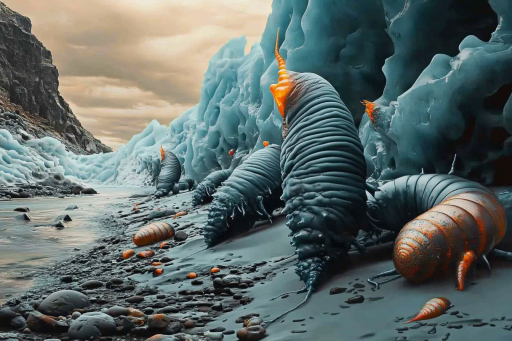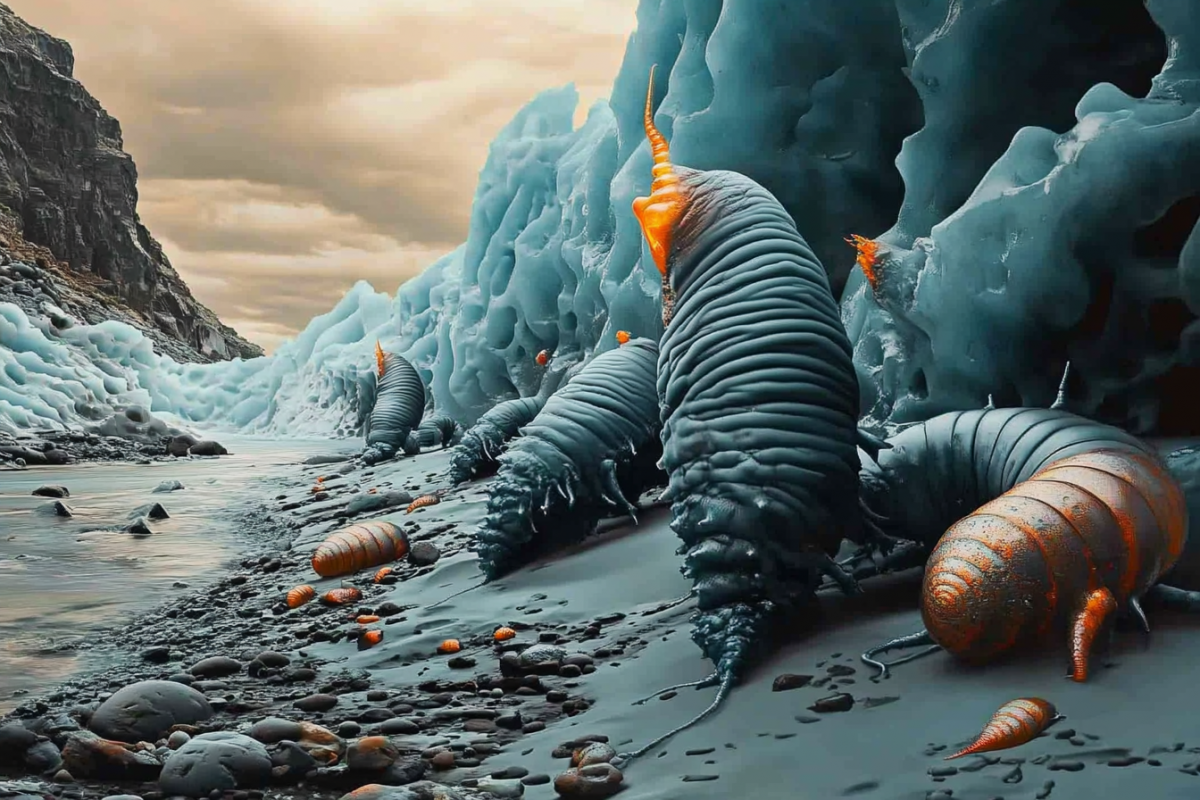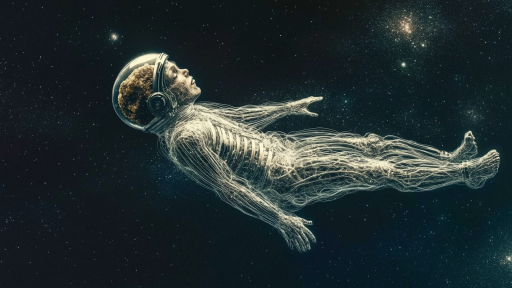
Earth is home to some of the toughest creatures in existence—organisms so resilient they could survive in the extreme conditions of outer space. From deep-sea trenches to scorching deserts, these life forms thrive where almost nothing else can, enduring extreme radiation, crushing pressures, and temperatures beyond freezing. Their bizarre adaptations make them perfect candidates for surviving on distant planets, moons, or even in the vacuum of space. Here are some of the strangest creatures on Earth that could withstand the harsh realities of the cosmos.
Tardigrade – The Indestructible Micro-Animal

Tardigrades, or water bears, are microscopic creatures that can survive extreme heat, freezing cold, and even the vacuum of space. These tiny but mighty organisms can enter a state called cryptobiosis, where they dry out and suspend all biological functions until conditions improve. Scientists have even exposed them to the radiation of open space, and they survived unscathed.
Antarctic Icefish – The Bloodless Survivor

Living in the freezing waters of the Southern Ocean, the Antarctic icefish survives without red blood cells. Instead, it has antifreeze proteins in its blood that prevent ice crystals from forming inside its body. This eerie adaptation allows it to thrive in temperatures that would be fatal to most other fish.
Pompeii Worm – The Heat-Resistant Extremophile

This deep-sea worm lives in hydrothermal vents where temperatures reach up to 176°F (80°C). It protects itself with a layer of heat-resistant bacteria covering its body, forming one of the most extreme symbiotic relationships on Earth. The Pompeii worm’s ability to survive such intense heat makes it a model for studying life on volcanic planets.
Halophiles – The Salt-Loving Microbes

Halophiles thrive in extreme salt concentrations that would kill most organisms. Found in hypersaline lakes and deep-sea brine pools, these microbes have adapted to an environment similar to Mars’s salty subsurface. Their ability to endure desiccation and high salinity makes them a prime candidate for surviving in extraterrestrial conditions.
The Devil Worm – The Deepest Living Creature

Discovered miles below the Earth’s surface, the devil worm survives in extreme underground pressures where almost no other life exists. This tiny nematode thrives in oxygen-starved environments, making it an excellent model for potential life beneath the surface of Mars or Europa. Its resilience proves that life can exist in even the most inhospitable places.
Yeti Crab – The Furry-Clawed Survivor

The yeti crab lives near deep-sea hydrothermal vents, where toxic chemicals spew from the ocean floor. It uses its hairy claws to farm bacteria, which it then consumes for survival. This bizarre adaptation mirrors how life might exist in alien oceans beneath the icy crusts of moons like Enceladus.
Bdelloid Rotifers – The Ultimate Survivors

These microscopic creatures can survive complete desiccation, extreme radiation, and even being frozen for years. Bdelloid rotifers have the unique ability to repair their own DNA after radiation damage, a skill that would be invaluable for surviving in space. Their ability to come back to life after being dried out makes them one of Earth’s most resilient species.
The Scaly-Foot Snail – The Iron-Clad Extremophile

Found in the deepest parts of the ocean, this snail has a shell reinforced with iron sulfide, making it the only animal known to incorporate metal into its armor. Living near hydrothermal vents, it withstands high pressures and toxic chemicals. Its iron-clad shell is reminiscent of adaptations that might be needed to survive on high-radiation exoplanets.
The Sahara Desert Ant – The Heat Runner

The Sahara desert ant can withstand some of the highest land temperatures on Earth, enduring up to 158°F (70°C). Its long legs keep it elevated above the scorching sand, while its body reflects sunlight to minimize heat absorption. This adaptation could make it an ideal model for studying survival on the blistering surface of Mercury or Venus.
Giant Tube Worms – The Sulfur-Feeding Survivors

Living in total darkness near hydrothermal vents, giant tube worms get their energy from sulfur-loving bacteria instead of sunlight. They host entire ecosystems in their deep-sea environment, much like potential alien life might exist in the depths of Europa’s ocean. Their ability to survive in a world devoid of sunlight makes them one of Earth’s most alien-like organisms.
Bdelloid Tardigrades – Radiation-Resistant Microbe

A relative of the common tardigrade, this species can withstand extreme doses of radiation that would kill most other life forms. Scientists believe its DNA repair mechanisms could help us understand how to protect astronauts from cosmic radiation. If life exists on high-radiation exoplanets, it might look a lot like this microscopic survivor.
The Wood Frog – The Freeze Survivor

The wood frog can survive being completely frozen for months, stopping its heart and halting all biological functions. When temperatures rise, it thaws out and continues life as if nothing happened. This ability to endure extreme cold makes it a perfect candidate for understanding how life might survive on frozen worlds.
The Brine Shrimp – The Space-Tested Organism

Also known as sea monkeys, brine shrimp eggs can survive complete desiccation and extreme radiation. Scientists have sent them into space, where they survived the harsh conditions of microgravity and cosmic radiation. Their resilience suggests that life could potentially survive interstellar travel.
The Deep-Sea Dragonfish – The Invisible Predator

Lurking in the pitch-black depths of the ocean, the deep-sea dragonfish has evolved near-invisibility to ambush its prey. Its body absorbs nearly all light, making it one of the blackest animals on Earth, while its bioluminescent lure attracts unsuspecting victims. This eerie ability to manipulate light mirrors the kind of adaptations life might need to survive in the dark void of alien oceans or beneath the icy crusts of distant moons.
The Sulfur Cave Worm – The Toxic Gas Thrivers

Living in caves filled with toxic hydrogen sulfide gas, sulfur cave worms thrive where most organisms would suffocate. Their ability to extract energy from these toxic environments suggests that life could exist in the poisonous atmospheres of exoplanets. Their resilience provides a new perspective on what conditions are truly “inhospitable.”
Life Finds a Way—Even in the Harshest Places

Earth’s most extreme creatures prove that life can adapt to almost any condition, no matter how unlivable it seems. From radiation-proof microbes to animals that can survive being frozen solid, these organisms challenge our understanding of what’s possible. If life can endure these extremes on Earth, who’s to say it doesn’t exist somewhere else in the cosmos?





